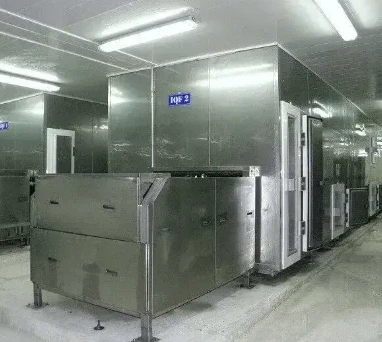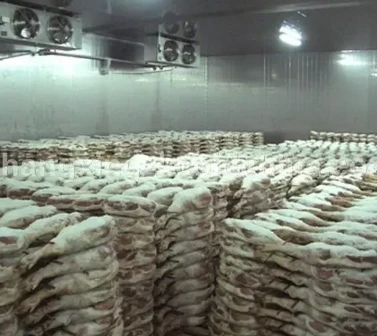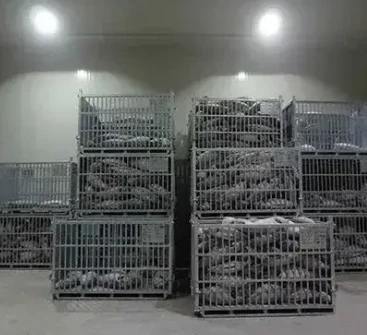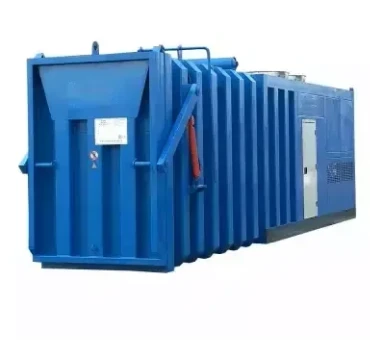Jun . 21, 2024 18:31
Back to list
Cold storage facilities for food production.
Innovations in Cold Room Food Storage Solutions for Factories
In the dynamic landscape of modern industrial food production, maintaining product quality and safety is paramount. One critical aspect often overlooked is the strategic implementation of cold room food storage solutions within factories. These facilities play a pivotal role in preserving perishable goods, ensuring they remain fresh and wholesome until they reach consumers.
Cold rooms are specialized environments designed to maintain low temperatures suitable for storing various food items such as fruits, vegetables, meats, and dairy products. They operate on the principle of refrigeration, using cooling systems that can range from conventional mechanical compression to more advanced technologies like liquid carbon dioxide or magnetic refrigeration. The latter examples represent innovative strides in reducing environmental impact while improving efficiency.
Within factory settings, cold rooms must adhere to strict guidelines regarding temperature consistency, humidity control, and air quality to prevent food spoilage and contamination. Advanced monitoring systems now feature sensors that provide real-time data on these conditions, alerting staff to any deviations from the optimal parameters. Furthermore, automation has enabled sophisticated inventory management, where products are tracked from intake to dispatch, ensuring a first-in, first-out rotation with minimal human intervention.
Another area of innovation is energy efficiency. Older cold storage units were notorious for high energy consumption, but contemporary designs incorporate better insulation materials and more efficient cooling mechanisms Older cold storage units were notorious for high energy consumption, but contemporary designs incorporate better insulation materials and more efficient cooling mechanisms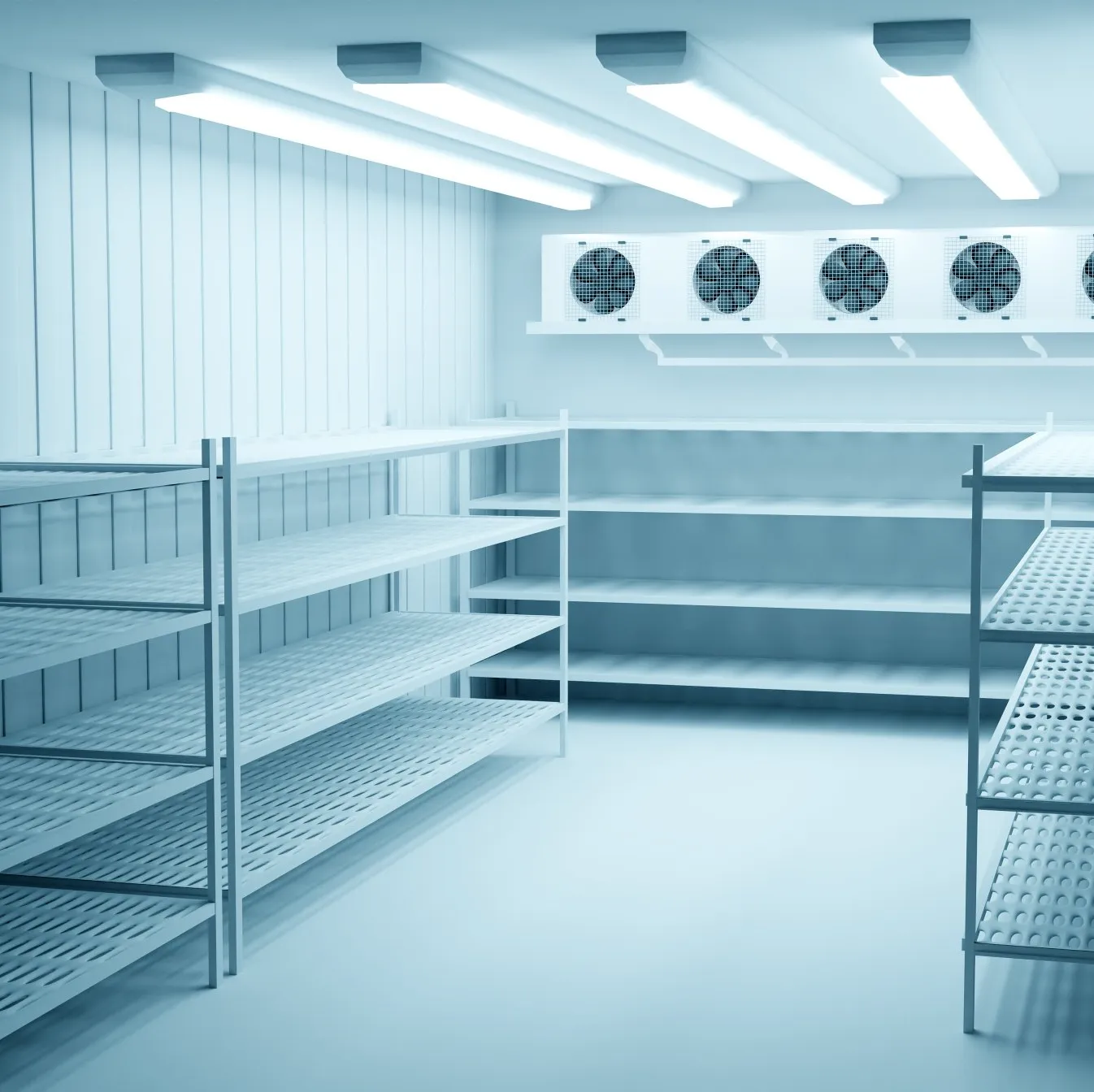 Older cold storage units were notorious for high energy consumption, but contemporary designs incorporate better insulation materials and more efficient cooling mechanisms Older cold storage units were notorious for high energy consumption, but contemporary designs incorporate better insulation materials and more efficient cooling mechanisms
Older cold storage units were notorious for high energy consumption, but contemporary designs incorporate better insulation materials and more efficient cooling mechanisms Older cold storage units were notorious for high energy consumption, but contemporary designs incorporate better insulation materials and more efficient cooling mechanisms cold room food storage factory. This not only cuts operational costs for manufacturers but also aligns their practices with sustainable business operations.
Food safety standards have also seen enhancements through the integration of UV lighting and ozone generators within cold rooms. These purification methods help eliminate bacteria and viruses, further safeguarding the food before it is processed or packaged.
The future of cold room food storage in factories lies in the convergence of technology and sustainability. Smart grids, renewable energy sources, and Internet of Things (IoT) devices will likely become integral components, creating a self-regulating ecosystem that maximizes efficiency while minimizing waste. As consumer demand for fresher, higher-quality food continues to rise, so too does the necessity for cutting-edge cold storage solutions within factory walls.
By embracing these innovations, food production facilities can not only ensure the integrity of their products but also position themselves as leaders in the industry, committed to both quality and environmental stewardship. The evolution of cold room technology is therefore not just about storage; it's about fostering a culture of excellence and sustainability in food manufacturing.
cold room food storage factory. This not only cuts operational costs for manufacturers but also aligns their practices with sustainable business operations.
Food safety standards have also seen enhancements through the integration of UV lighting and ozone generators within cold rooms. These purification methods help eliminate bacteria and viruses, further safeguarding the food before it is processed or packaged.
The future of cold room food storage in factories lies in the convergence of technology and sustainability. Smart grids, renewable energy sources, and Internet of Things (IoT) devices will likely become integral components, creating a self-regulating ecosystem that maximizes efficiency while minimizing waste. As consumer demand for fresher, higher-quality food continues to rise, so too does the necessity for cutting-edge cold storage solutions within factory walls.
By embracing these innovations, food production facilities can not only ensure the integrity of their products but also position themselves as leaders in the industry, committed to both quality and environmental stewardship. The evolution of cold room technology is therefore not just about storage; it's about fostering a culture of excellence and sustainability in food manufacturing.
 Older cold storage units were notorious for high energy consumption, but contemporary designs incorporate better insulation materials and more efficient cooling mechanisms Older cold storage units were notorious for high energy consumption, but contemporary designs incorporate better insulation materials and more efficient cooling mechanisms
Older cold storage units were notorious for high energy consumption, but contemporary designs incorporate better insulation materials and more efficient cooling mechanisms Older cold storage units were notorious for high energy consumption, but contemporary designs incorporate better insulation materials and more efficient cooling mechanisms cold room food storage factory. This not only cuts operational costs for manufacturers but also aligns their practices with sustainable business operations.
Food safety standards have also seen enhancements through the integration of UV lighting and ozone generators within cold rooms. These purification methods help eliminate bacteria and viruses, further safeguarding the food before it is processed or packaged.
The future of cold room food storage in factories lies in the convergence of technology and sustainability. Smart grids, renewable energy sources, and Internet of Things (IoT) devices will likely become integral components, creating a self-regulating ecosystem that maximizes efficiency while minimizing waste. As consumer demand for fresher, higher-quality food continues to rise, so too does the necessity for cutting-edge cold storage solutions within factory walls.
By embracing these innovations, food production facilities can not only ensure the integrity of their products but also position themselves as leaders in the industry, committed to both quality and environmental stewardship. The evolution of cold room technology is therefore not just about storage; it's about fostering a culture of excellence and sustainability in food manufacturing.
cold room food storage factory. This not only cuts operational costs for manufacturers but also aligns their practices with sustainable business operations.
Food safety standards have also seen enhancements through the integration of UV lighting and ozone generators within cold rooms. These purification methods help eliminate bacteria and viruses, further safeguarding the food before it is processed or packaged.
The future of cold room food storage in factories lies in the convergence of technology and sustainability. Smart grids, renewable energy sources, and Internet of Things (IoT) devices will likely become integral components, creating a self-regulating ecosystem that maximizes efficiency while minimizing waste. As consumer demand for fresher, higher-quality food continues to rise, so too does the necessity for cutting-edge cold storage solutions within factory walls.
By embracing these innovations, food production facilities can not only ensure the integrity of their products but also position themselves as leaders in the industry, committed to both quality and environmental stewardship. The evolution of cold room technology is therefore not just about storage; it's about fostering a culture of excellence and sustainability in food manufacturing. Related PRODUCTS
Copyright © 2025 Shijiazhuang Xuexiang Refrigeration Euquipment Co.,Ltd. All Rights Reserved. Sitemap | Privacy Policy













































































































